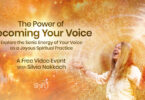Contributing Writer for Wake Up World
In the past if television networks wanted to gauge audience reaction to a program before it went on air, they would have to create a focus group where consumers are paid to sit in a room and give feedback to a proctor. Now, that seems to be a practice which might forever be dashed in favor of high-tech mind reading methods which can actually better gauge the viewer’s engagement and enjoyment than they themselves can.
It sounds like the stuff of science fiction, but indeed highly advanced testing methods are able to better discern how viewers are responding to content than they consciously can.
Subjects have their heads wired with an EEG headset with twenty carefully placed sensors resulting every thought process is mapped and recorded, showing that what we think and what we actually say are two very different things.
The sensors are aligned with areas relating to engagement, memory, visual attention and emotional attention, which when monitored together give a much better sense of how the subject is reacting to the stimuli than even they themselves are capable of.
The technology was designed in Australia and Peter Pynter of Neuro-Insight says that the previous methods of focus groups, market research and question and answer surveys could never tell the full story.
This is because Pynter’s technology is not based on questioning the viewer; instead it simply records their natural, subconscious reactions to what they are watching.
“We don’t ask any questions. We just let the brain do all the talking, and what that allows [us] to do is pick on specific areas of the rain that the field of neuroscience has established over the last 90 to 100 years, to what people’s real responses are. The pure response – the emotional response to content,” Pynter told Australia’s Today Tonight
Video: Today Tonight’s Segment Entitled – Brainwave blockbusters
“There are all sorts of motives to what we end up saying. We often say things that are convenient for the group, or we are conditioned to say,” he said. “A lot of the time we would be embarrassed to say we watch a certain program, and we’d avoid saying what it’s really all about.”
“More often than not you will find at least half [of the EEG recordings] that will line up with what people say,” Pynter said. “That tells us that people can say one thing, and their brain tells us another, and it’s a real measure of emersion.”
Some programs have a strong divergence between the results from pen and paper questionnaires and the brain activity monitoring, like “My Kitchen Rules” which was ranked 16th on paper and 3rd according to neuro-engagement. Of the top ten shows, only a single show matched up between the paper survey and the neurological signals.
Steve Allen, a Media Analyst from Fusion Strategy says that Neuro-Insight could very well be the future of market research, noting that all commercial networks in Australia are already using it.
“It is really like a lie detector. It’s measuring your brain impulses, so it’s not saying ‘do you like this?’ Instead it’s mapping what your brain is telling you about the show,” Allen said.
This technology also has implications outside of just entertainment programming on television, indeed this could easily be applied – with no modification whatsoever – to other things which would benefit from being able to measure viewer engagement beyond what they can consciously report.
I could see this being incredibly useful for political campaigns, public service announcements, and anything intended to steer the public in one way or another, in addition to the obvious commercial benefits this technology presents.
About the Author
Madison Ruppert is the Editor and Owner-Operator of the alternative news and analysis database End The Lie and has no affiliation with any NGO, political party, economic school, or other organization/cause. He is available for podcast and radio interviews. If you have questions, comments, or corrections feel free to contact him at [email protected]

If you've ever found value in our articles, we'd greatly appreciate your support by purchasing Mindful Meditation Techniques for Kids - A Practical Guide for Adults to Empower Kids with the Gift of Inner Peace and Resilience for Life.
In the spirit of mindfulness, we encourage you to choose the paperback version. Delve into its pages away from screen glare and notifications, allowing yourself to fully immerse in the transformative practices within. The physical book enriches the learning process and serves as a tangible commitment to mindfulness, easily shared among family and friends.
Over the past few years, Wake Up World has faced significant online censorship, impacting our financial ability to stay online. Instead of soliciting donations, we're exploring win-win solutions with our readers to remain financially viable. Moving into book publishing, we hope to secure ongoing funds to continue our mission. With over 8,500 articles published in the past 13 years, we are committed to keeping our content free and accessible to everyone, without resorting to a paywall.







